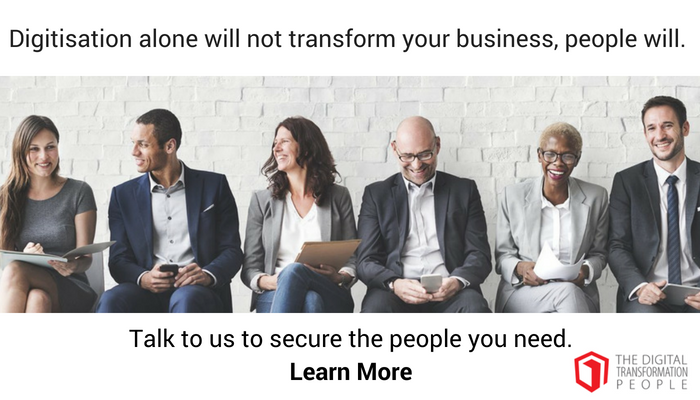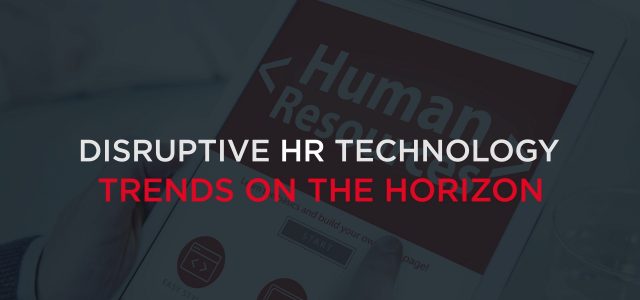I enjoyed talking with Pedro Soto from Westbury Analytics about managing change and staying ahead of the competition. Karen Ferris joins Pedro Soto in this episode of Westbury Analytics talk radio to talk about the role of analytics in managing change and How Getting Change Right Puts You Ahead of the Competition.
Transcript
Pedro Soto: Hello again, this is Pedro Soto welcoming our listeners to another episode of Westbury Analytics Talk Radio Show. Today our guest is Karen Ferris: author, speaker, facilitator, educator, coach and mentor. She powers people to embrace constant change with pragmatism and builds herself as an organizational change and service management rebel with a cause. Before we dive into our topic today, I want to welcome Karen and ask her to tell us a little bit more about herself, Karen, welcome!
Karen Ferris: Thank you, it’s a pleasure to be here, Pedro, thank you for asking me. Yes, so as you said, I do claim to be an organizational change management rebel with a cause and I bestowed myself that title, basically because I like to push the boundaries of the industry. I like to challenge our ways of thinking and get to people to think differently and challenge the status quo. So my background primarily was IT Service Management for many years, and then about 10 years ago I pivoted into organizational change management. So, by that, we’re talking about helping people successfully transition through change. Even more importantly today, whereas you mentioned in the introduction, change is constant and it’s uncertain, we can’t predict as we currently know in the situation we’re all globally sitting in at the moment with the pandemic. No-one could predict what’s gonna happen was going to happen, no one could predict the scale of the change and the repercussions that one change, that one pandemic would have, so if they’re looking at – one of my focuses is building resilient workforce and I know more time than present do we need people to be resilient in the face of major change.
Pedro: Absolutely, so one of the major reasons that organizations engage in projects, this is certainly very true in organizations, is to affect change. Right now. We were talking before our podcast about how organizations devote lots of energy measuring the efficiency of the projects and resource management and on-time on-budget such of things which is important, but you were mentioning how they fail to do some other key things as part of their managing change and managing projects and this tends to affect the effectiveness for their projects and of the change they’re trying to affect. I know you have some clear and strong ideas about what else they should be doing and measuring to get change right.
Karen: Absolutely and I think as you mentioned traditionally projects have measured on time within budget and functionality (and there’s a statement I couldn’t claim where it came from) that says “no projects install change, the organizational change management implements change”. As the project gets to its deadline, walks away, yeah we’re on schedule, we’ve got some functionality out there and we’re within the budget, we’re done. But that doesn’t mean that the change has been embedded or has being widespread uptake and as a result of that, there’s the claim McKinsey made (and I can’t remember the year, quite a long time ago) that 70 per cent changes projects fail. Now and that’s been widely quoted ever since, but there’s actually no research or facts to underpin that statement, no one’s been able to find them over the year since it was made. And I think the challenge because if that was true organizations would be out of business, 70% of everything they did project-wise failed and so you know my gut says it can’t be true. But I think if you said we are going to measure projects on the things that I think this should be measured on, which is uptake, peoples readiness for the change, and it had bedded into, business as usual, the value was delivered, the desired business outcomes were received. little need for ongoing support post implementation, little rework needed post implementation and a good customer experience and user experience. And if you were to measure all those things, as well as the functionality scheduled budget, if we’ve measured that bigger picture, then 70% of projects probably do fail, because of all of those things. Now I’m saying that you know very generally but if we try to look with that 70% figure came from maybe that’s it’s the definition of success that’s wrong, that it’s not just that money and time and functionality, it’s about business value in outcomes, it’s about uptake and those things.
Pedro: Yeah that’s fascinating because I study a lot, project and portfolio management, and there actually is a trend now to go beyond those traditional sets of measurements, and so the category is being called “business outcome management”. And it gets into the performance, right. the value delivered and the alignment, so what was promised or was what was used to justify a certain project, really what the organization needed and what is delivered and all that. But there’s one interesting line item that you mentioned “readiness for change”, that’s not being talked about a lot yet, at least in all the research that I’ve done in the work that we do with clients in that area. Tell us a little bit more about it. I mean it’s kind of self-evident at first glance, but this kind I think you have more to say about that.
Karen: Yes a readiness to change is something that’s probably wildly talked around talked about in the organizational change management community, because people have to be ready to adopt new ways of working, new ways of thinking, new processes, systems, whatever it might be, new roles. And they have to be we have to make sure people are ready for the change that’s going to impact them and that is making sure and this is where organizational change management really comes into its own, it’s about making sure that people are you know aware of why the organization needs to make this change. Now that’s something that often gets overlooked, I talk a lot about the power of “why”, when people are driving change in an organization often talk about what we need to do and how we’re going to do it, and I’m going “what’s the why?”, why do we need to do it and if we have the conversation about the why, people go “okay”, we need to stay in business, I need to take my job, you know, it can be that simple, but if I know understand the why and they’re more likely to be on board to make sure they’re aware of the need to change, that we create a desire in people to change, we give them the right knowledge, the right training, the capability and we address all those different learning needs as well. So by the time we’re going to go right we’re about to go live everyone’s like “yeah, cool bring it on, I feel ready”. And everyone will get to that point in a different speed, so in terms of analytics, we need to be able to measure that readiness as we’re progressing a change through the organization. Some people depending on the nature of change will go” yeah, cool, this sounds good, I like this” or someone else might go “oh, I really don’t understand how this is going to impact me, I need more information”. So we need to measure where people are at and then give them the information. Is it a lack of training or do we need more training? Do they need more information? Is it an education piece to bring everybody to the point at which we need them to be?
Pedro: Yeah, but it definitely means time and effort has to be made to get a feel for that readiness. There’s another concept that you speak about that I think is very timely and I’d like you to expand on it as the resilience, the resilient workforce. What do you mean by that and how can leaders develop that resiliency in their workforce?
Karen: Yeah I think it’s this is really a passion of mine and you know we’ve talked about getting people ready for change, we often talk about people resisting change and putting in tactics and methods to try and overcome that resistance. I take a step back and say people generally don’t resist change when it’s done with them, if you bring me on the journey and they understand the “why” and the imperatives and everything else, and you give me the resources and the capability to effectively adopt the change, then I’m not going to resist it. I understand why we need to do it and people generally resist change when it’s done to them, not when it’s done with them. So my focus is I think we need to build a resilient workforce and by that people may have heard of the acronym VUCA, when we’re talking about business change, it’s Volatile, it’s Uncertain, it’s Complex and it’s Ambiguous. For lots of changes that hitting us just like they are now and there’s no playbook, there’s no previous context, they’re unknown unknowns and that can be scary and that can make people anxious, make them fearful of change. And when change when organizations are having to continually change to stay ahead of the competition and that speed of change is increasing in velocity, then we need people to have the skills, resources, capabilities to just say “bring it on”, because we don’t have and I think we talked previously about (and I hope I’m not digressing too much) previously about the model that most change management approaches frameworks are built on, and the majority of them have built on the premise that an American German psychologist back in 1947 said you could you do change in three steps. You unfreeze the status quo, you make the change and then you refreeze that change into the organization and then you have some stability, and then you start again. Now it has been there was some research done and I have the names here if anyone wanted to look it up: Steven Cummins, New Zealand, Todd Richmond, New Zealand and Kenneth Brown from the USA did some research in 2016 and proved that Kurt Lewin, the psychologist we’re talking about, never ever said you could do change in three steps, never said unfreeze change refreeze. He was far too clever to have an assess and think so simple and when you look at the rest of the work that he did in his writings, it doesn’t make any sense. So their researched it and they say that he never ever said that, but unfortunately every framework has become the foundation for every change framework around it’ll most of them, so one of the things I have written about and the white paper in the past was you know change is broken. If that’s what we’re taking, we can’t take that one-two-three stop, one-two-three stop approach, because there is no stop. It’s not linear, it’s cyclic, it’s spinning and the spins getting faster. So how do we stop people getting change fatigue, getting burnout, the stress, the anxiety? And we do that by building resilience in the workforce. So there’s two ways I think we need to do that. One is give our workforce the capability, the skills and the resources to pull upon to be resilient, because resilience can be learned and there may be a time when I need to increase my self belief. There may be a time when I need to look at my emotional intelligence, there might be a time where I need to do more collaboration whatever it’s the context I’m in. So we give people all of those tools and resources. But then on the other side of the coin, leaders have a responsibility to make sure that they have resilient teams, so one of the things I do is educate through workshops and coaching leaders to spot low resilience, what does it look like when someone’s gone from being you know resilient in the face of constant change and then not so much, and there are some early signs and leaders need to intervene as soon as possible. And I think a lot of leaders today are reluctant, not because of ill will but if I said to you Pedro you know “are you okay?” and you say “no, Karen, I’m not”, what do I say? Oh! I’ve not been equipped to say “okay, let’s go and have a talk” and understanding that I as the leader do not need to be a doctor or a psychiatrist or a psychologist, I just need to be there to support the person in my team who is struggling at this moment in time and help them find the right solution, which could be seeing a medical professional, seeing a counsellor, they might just need increased support, a buddy or whatever it might be. And in creating an environment in which resilience can thrive through things like psychological safety and leading with compassion and lots of other things that I’ve got two books about to be released so, “Unleash the Resiliator for Individuals” the one handbook for leaders, which cover those two sides of the coin.
Pedro: So there’s an interesting angle to this whole concept of resiliency and getting change right, because as you say it’s constant endless competition around, so there’s competition, the environment is changing and all of that you have to deal with it, so there’s really an imperative for the leadership to get change right, to develop that resiliency, because if they don’t, what’s likely to happen? Somebody else will, right?
Karen: There is, absolutely. This is another passion of mine, psychological safety in the workplace, where people are encouraged to speak up, to challenge the status quo, to challenge decisions, to come up with alternatives to say “you know I think there’s a better way of doing this”, to be able to enough from the people in the workforce you know, the ones on the front line you know in the customer contact center, in our retail stores, in our factories wherever, they probably have the best ideas, because they’re there, there on the floor seeing what’s going on. So we need to give them the safety to sense and respond and come up with those innovative ideas and then on the back of that is the fact that we need to operate in a more agile fashion, but also being prepared to experiment, get it wrong, have setbacks. I hate to use the word failure, it isn’t a failure, it’s a setback. We didn’t get the result we wanted so we try again. And leaders have a responsibility I believe to build that mindset into their teams, that if we don’t have setbacks, we’re never going to move forward. Nobody got it right first time very often and you look at the giants out there like the Apples and the Googles and there are loads of stories about stuff that they got wrong and just never you know never took off and I think it’s Thomas Edison that said something like or as quoted as saying “I haven’t failed 10,000 times, I’ve just found 10,000 ways that don’t work”, something like that and I think that’s the mentality we need, that it’s okay to not get it right the first time. And those organizations that are you know people call it safe to fail but those organizations that they don’t want to get it wrong but they accept that sometimes that’ll happen and they just keep moving forward, let’s learn from that, let’s move forward, not dwell on the past. They just take the learning and they keep moving.
Pedro: Yeah, that’s a sign of resiliency in individuals and their groups themselves, right, to be able to have the strength to experiment, know that it’s not gonna work out in the first try, it might take several, a handful, many, but it really does require strength and resiliency.
Karen: Think about just simple things like a child riding a bike. I didn’t get on first time and take off into the sunset and I don’t think you did either, Pedro! We just kept trying and we had that optimism that one day we would get it right and we understood that it was realistic optimism that it would take a few knocks and falls and wobbles and whatever, but we’d get there and we did. And it’s the same mindset that yes we’ll achieve it, but it’ll take some hard work to get there.
Pedro: Excellent, we’ve touched on some great points, Karen, thanks. In wrapping it up, I’d love for you to share with our audience about the book you’re about to publish and then how they can get a hold of you, where they can find you.
Karen: Yeah, thanks. As I mentioned this, there are two books about to be published “Unleash the Resiliater Within – a handbook for individuals”, so that’s everybody, including our leadership. And then there’s the other companion handbook, which is “Unleash the Resiliator Within: a handbook for leaders”. So both of those will be available on all the normal platforms. Last year I published a book called “Game On! Change is constant”, tactics to win when new leading change is everybody’s business, so that’s also available from all the online book stores. And my work with organizations over the last 12 months or so, focusing on resilience is running leadership workshops to help leaders change their style and it’s quite amazing when you start talking to them about delegation and empowerment and allowing people to self-manage and you start off with the “oh there’s gonna be anarchy” you know and then the penny drops if they see how much time they’re going to gain and how much engagement and motivation they’re going to have in their teams by getting out of the way basically. So getting in touch with me, KarenFerris.com, that’s simple. All my contact details are there, I blog on a regular basis so have a dig around into my contact details if anyone wants to get in touch. Please reach out, would love to have conversations.
Pedro: Alright, awesome. Well, there you have it, folks. Karen, thank you so much for taking time from your busy schedule to talk to us and share your insights and your experience and just we really appreciate it.
Karen: No, thank you, it’s been a pleasure, thank you for inviting me along.
Article by channel:
Everything you need to know about Digital Transformation
The best articles, news and events direct to your inbox
Read more articles tagged: Change & Transformation, Featured









